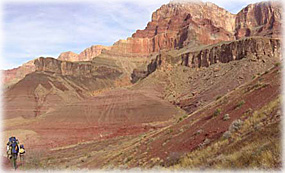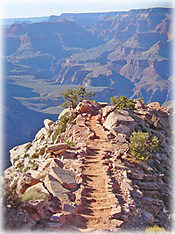Going on a hike is wonderful way to experience some of the canyon’s rich natural beauty and immense size. However, even if you are an avid hiker, hiking the Grand Canyon is very different from most other hiking experiences.
Mental attitude and adequate water and food consumption are absolutely essential to the success of any Grand Canyon hike, particularly in summer. The day hiker and the overnight backpacker must be equally prepared for the lack of water, extreme heat and cold, and isolation characteristic of the Grand Canyon.












